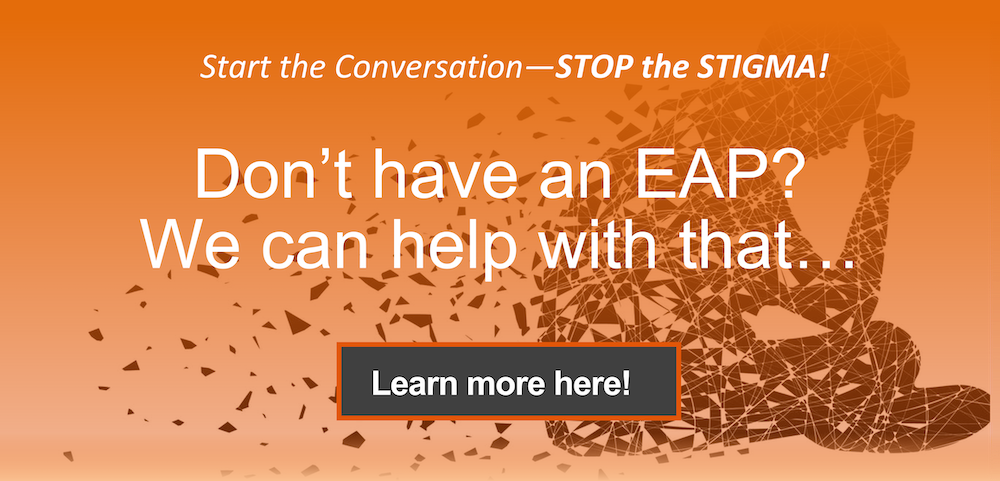Mindfulness has become a buzzword, showing up everywhere from wellness apps to yoga studios to corporate workshops. But the core idea is anything but new.
Rooted in centuries-old practices, mindfulness simply means paying attention to the present moment without judgment. It’s not about zoning out or achieving instant calm. It’s about learning to show up, fully, for whatever is happening right now.
That might sound simple, but in practice, it can be remarkably difficult. Our minds constantly scan the past for problems and project into the future for solutions. Add the constant hum of digital distractions, and staying present can start to feel like a lost art.
A well-known Harvard study found that people spend nearly 47 percent of their waking hours thinking about something other than what they’re doing. This tendency is strongly linked to lower levels of happiness.
Still, research shows that even small moments of mindfulness can have powerful effects on stress, focus, and emotional well-being. And unlike some wellness trends, mindfulness doesn’t require special tools, long time commitments, or a quiet mountaintop. It starts wherever you are — with a breath, a pause, or a shift in attention.
What is Mindfulness?
Mindfulness is the practice of bringing your attention to the present moment. It means noticing what’s happening around you and within you, including your thoughts, emotions, and physical sensations, without trying to change them or label them as good or bad. At its core, mindfulness is about awareness and acceptance.
Practicing mindfulness has been shown to reduce stress, improve concentration, enhance emotional regulation, and strengthen relationships. According to psychologist Tchiki Davis, studies link mindfulness to benefits such as:
- Reduced rumination
- Decreased emotional reactivity
- Better cognitive flexibility
But knowing the benefits doesn’t make it easy. Many of us spend our time either replaying the past or anticipating the future. We zone out during meetings, eat lunch while scrolling through messages, or focus on what’s next instead of what’s happening now. Digital distractions only add to the challenge.
It’s also easy to confuse mindfulness with meditation. While meditation is one way to practice mindfulness, it’s not the only path. You can be mindful while sipping your morning coffee, pausing to take a deep breath between meetings, or fully listening during a conversation. These small moments of attention are just as powerful as any seated practice.
The Art of Now: 6 Practical Strategies
You don’t need hours of free time or a quiet mountaintop to live more mindfully. What you do need is the willingness to notice where your attention goes and gently bring it back. These 6 strategies offer practical ways to do that, even in the middle of a busy day.
1. use your senses to anchor awareness
When your thoughts start to spiral or scatter, your senses can serve as a steady anchor. Try this: stop for a moment and name five things you can see, four you can touch, three you can hear, two you can smell, and one you can taste.
This technique, often used in grounding practices, shifts your attention from internal noise to external experience. Engaging the senses helps quiet mental chatter and brings you back to the now.
2. Interrupt the autopilot mentality
Many people move through their days without noticing half of what they do. You might arrive at work with no memory of the commute or finish a meal without remembering how it tasted.
Mindfulness means stepping out of that default mode. One way to do this is by changing small parts of your routine. Take a new route home. Switch which hand you use to brush your teeth. Even these simple changes prompt your brain to re-engage with what’s happening instead of slipping into the usual patterns.
3. try the "raisin exercise" (or Something just as ordinary)
The raisin exercise is a well-known mindfulness technique that involves observing, smelling, tasting, and chewing a single raisin as slowly and attentively as possible. It’s not about the raisin. It’s about fully experiencing something you would normally rush through. (Don’t like raisins? Try it with a slice of apple or a sip of tea.)
The point is to slow down an everyday moment and explore how much you usually miss when you're on autopilot. This method is commonly used in mindfulness-based stress reduction (MBSR) programs to teach people how to reconnect with the present.
4. Build gratitude into Transitions
Gratitude and mindfulness are closely linked, but it can be hard to feel grateful in the middle of a hectic day. Instead of trying to force the feeling, look for natural transition points where you can build a quick practice. At the end of a meeting, between tasks, or before leaving work, take just 10 seconds to notice one thing that went well or made you feel grounded.
Savoring small moments can significantly boost positive emotion and help retrain your brain to notice the good.
5. use your breath to reset your focus
Your breath is always available, and often overlooked. When stress starts to build or your focus drifts, even one minute of conscious breathing can shift your state. Try inhaling slowly for four counts, holding for four, exhaling for four, and pausing for four.
This technique, called box breathing, is frequently used by those in high-stress roles, such as first responders and athletes, to calm the nervous system and regain focus.
6. let go of the need to "fix" every feeling
Mindfulness isn’t about forcing positivity or pretending everything is fine. It’s about being honest with yourself about what you're experiencing. If you're irritated, acknowledge it. If you're anxious, name it.
This approach, known as radical acceptance, encourages you to stop fighting reality and start observing it with curiosity. Simply noticing emotions without trying to change them can reduce their intensity over time.
Making Mindfulness Part of Your Day
It’s easy to assume mindfulness requires a quiet space, a meditation cushion, or time you don’t have, but some of the most effective mindfulness practices are the ones that happen in motion, layered into everyday routines.
- Start small. Choose one activity you already do every day and make it your cue to be present. It could be brushing your teeth, drinking your morning coffee, or walking from your car to the office. Instead of letting your mind wander, try paying close attention to each part of the experience. Notice the texture, the rhythm, the sounds around you. It’s not about doing the task perfectly. It’s about doing it with your full attention, even just for a few moments.
- Technology can be both a barrier and a tool. You might set a reminder on your phone that simply says "pause." When it goes off, take a breath and check in with your body or your surroundings. Some people use sticky notes on their monitor or water bottle as visual cues to stop and refocus. You don’t need to overhaul your schedule. You just need to build in brief pauses that help shift your awareness back to what’s actually happening.
- At work, mindfulness might mean taking 30 seconds before a meeting to breathe and settle. It could mean listening more attentively in conversations or choosing to eat lunch without distractions. These aren’t major changes, but over time, they can change how you experience your day.
The key is consistency, not perfection. Some days will be better than others. What matters is returning your attention to the moment, again and again, as many times as needed.
How Employers Can Encourage Mindfulness
Mindfulness is not a perk or a passing trend. When embedded into workplace culture, it becomes a practical tool for navigating pressure, making better decisions, and improving employee well-being. But supporting mindfulness in a meaningful way requires more than a wellness initiative or a few breathing exercises.
Start with the work environment itself. Workplaces that constantly reward speed and multitasking make it difficult for people to be present. If mindfulness is the goal, organizations need to design workflows and expectations that allow for clarity and focus.
This might include:
- Rethinking the pace of work. Encourage depth over speed when possible. Let teams know it’s okay to take a moment to think before responding.
- Prioritizing task clarity. Unclear expectations are a major driver of stress. Mindfulness thrives in environments where people know what matters and have time to focus on it.
- Supporting task clarity. Unclear expectations are a major driver of stress. Mindfulness thrives in environments where people know what matters and have time to focus on it.
Leaders play a critical role. Mindful leadership isn’t about always being calm. It’s about being aware of your own impact, noticing when tensions rise, and choosing how to respond. Leaders can model this by:
- Actively listening without multitasking
- Acknowledging stress or overwhelm instead of powering through it
- Taking a moment to pause before reacting to difficult situations
If training is part of the plan, keep it practical. Skip the theory-heavy lectures and focus on real scenarios — difficult conversations, overloaded calendars, email fatigue. Help employees learn how to apply mindfulness in those specific moments, not just in quiet rooms or guided meditations.
And finally, embed mindfulness into the way your organization makes decisions. From meeting design to performance reviews, ask: does this approach support awareness, presence, and intention? If not, there may be a more effective path forward.
When you partner with Ulliance, our Life Advisor Consultants are always just a phone call away to teach ways to enhance your work/life balance and increase your happiness. The Ulliance Life Advisor Employee Assistance Program can help employees and employers come closer to a state of total well-being.
Investing in the right EAP or Wellness Program to support your employees will help them and help you. Visit https://ulliance.com/ or call 866-648-8326.
The Ulliance Employee Assistance Program can address the
following issues:
• Stress about work or job performance
• Crisis in the workplace
• Conflict resolution at work or in one’s personal life
• Marital or relationship problems
• Child or elder care concerns
• Financial worries
• Mental health problems
• Alcohol/substance abuse
• Grief
• Interpersonal conflicts
• AND MORE!
References:
7 Science-Based Ways to Live in the Moment; Psychology Today; Tchiki Davis
https://www.psychologytoday.com/us/blog/click-here-for-happiness/202104/7-science-based-ways-to-live-in-the-moment
A Wandering Mind Is an Unhappy Mind; Science; Matthew A. Killingsworth & Daniel T. Gilbert
https://science.sciencemag.org/content/330/6006/932
How to Be Mindful If You Hate Meditating; TIME; Angela Haupt
https://time.com/6249527/how-to-be-mindful-hate-meditating
The Art of Now: Six Steps to Living in the Moment; Psychology Today; Jay Dixit
https://www.psychologytoday.com/us/articles/200811/the-art-now-six-steps-living-in-the-moment



